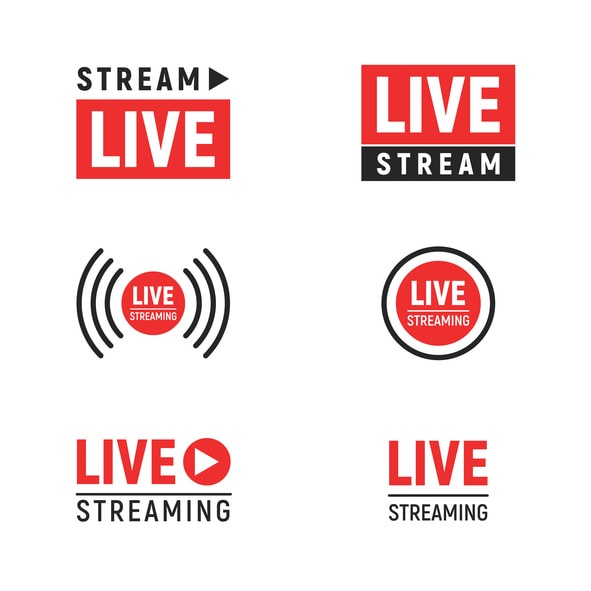CDN Pricing for Live Video Broadcasting
Are you using video? It’s the premier modern communication tool. That’s a fact reflected in the numbers. Companies that use video grow revenue 49 percent faster than those that don’t, which is a huge difference. A key part of success in this field is delivering video efficiently. This blog will look specifically at CDN pricing for live video streaming.
Any broadcaster can benefit from using a CDN, or Content Delivery Network. However, a video streaming CDN is absolutely essential if you’re live streaming to a large audience. Today, 79 percent of all global consumer web traffic comes from watching videos online. That’s a huge amount of data, and a CDN can help you handle it.
This blog will introduce you to the world of CDNs and explore the world of high-volume live video broadcasting. Then, we’ll dive into a CDN pricing comparison of the top providers on the market. Finally, we’ll finish out by exploring an alternative model: using a video streaming solution that integrates a CDN with their service.
Introduction to Content Delivery Networks
We’ll get started here with an introduction to Content Delivery Networks, and will start with this question: what is a CDN? A CDN, as the name implies, is a content delivery network. Specifically, it’s a network of computer servers that are distributed around the world.
These servers are configured to help content creators deliver content to users. This content could be video, audio, images, text, large file downloads, or any other type of digital information.
When it comes to streaming live video, a CDN function by duplicating a live stream video feed as it is created. Duplicate copies of the stream are sent to various servers. These servers are dynamically selected based on how big your audience is and where they are located.
The effect of this is that, instead of concentrating all your web traffic on a single or small number of servers, the load is distributed across dozens of servers. On top of this, users are automatically connected to the fastest server for their network connection.
In this way, a CDN makes content delivery faster, more reliable, more scalable, and much safer.
Professional broadcasters (OTT, media, sports, etc) and high-volume streaming
 For high-volume live streaming, using a live streaming CDN is essential. Many professional broadcasters can expect to get tens of thousands of viewers—or more—with every broadcast.
For high-volume live streaming, using a live streaming CDN is essential. Many professional broadcasters can expect to get tens of thousands of viewers—or more—with every broadcast.
For OTT video broadcasting (especially live releases of popular shows, sports, and breaking news), audiences can be massive.
Are you prepared to deal with a million simultaneous live stream viewers at once? Even with a robust internal server infrastructure, that’s enough demand to bring most networks to their knees. For the sake of scalability, we recommend that professional broadcasters use a CDN instead of rolling their own live streaming servers.
The effect of using a CDN to improve the speed of your web content can be dramatic. To use an example from outside the video industry, Mozilla got 60 million more Firefox downloads per year simply making their pages load 2.2 seconds faster. When it comes to online content, speed translates directly into success.
Why Use a CDN for Professional Live Video Broadcasting?
As GlobalDots notes in their extensive review of CDN technology for live streaming, CDNs are critical for online video.
“Video streaming is one of the largest mega-trends today… Despite the advent of ABR [Adaptive Bit Rate] and HTTP streaming, there still is a need for live video delivery, since live video can’t be cached like the content that has been previously recorded.”
There are many other benefits of using a CDN. Let’s outline a few of them in detail:
- Lower latency, since users located around the world, are likely closer to a point of presence CDN server in their location.
- Better quality, since buffering will be reduced by using a CDN.
- Faster speeds, since loads, are automatically distributed across massive networks and bandwidth.
- Increased reliability, since the system can continue to scale to huge loads—in contrast to local servers, which may crash if overloaded.
- Security, since a CDN helps protect against DDoS attacks (one of the most common types of digital attacks, in which a company website is flooded with thousands or millions of spurious requests).
- Global reach, since a CDN network likely has servers located in or adjacent to any country in the world.
CDN Pricing Comparison
 Now that we have a good understanding of how CDNs work and why you should use one, let’s move on to a CDN pricing comparison. In the next section, we’ll look at a few top CDN providers in the world—and finish off by providing an alternative means to access CDN services.
Now that we have a good understanding of how CDNs work and why you should use one, let’s move on to a CDN pricing comparison. In the next section, we’ll look at a few top CDN providers in the world—and finish off by providing an alternative means to access CDN services.
Top CDN Providers for Live Video Broadcasting
1. Amazon CloudFront CDN Pricing
Web giant Amazon has come a long way from being a bookstore. Today, they are one of the largest providers of cloud computing services, including CDN services. Their CloudFront CDN supports live streaming and is priced based on region.
Pricing for bandwidth in the United States starts at $0.085 per GB for the first 10 TB.
2. Akamai CDN Pricing
Akamai is the largest CDN on the planet. Their network includes more than 240,000 servers located in more than 130 countries worldwide. Their “Media Services Live” division focuses on live streaming.
They do not publish pricing information on their website. However, it is possible to deliver your live streams via the Akamai CDN for affordable flat rates. To learn more, skip ahead to the final section titled “Using an Online Video Platform with top tier CDN integration.”
3. MaxCDN / StackPath Pricing
Another popular CDN offering is MaxCDN, which recently merged with StackPath CDN. StackPath supports live streaming and pricing is based on monthly plans. Plans include:
- $20 per month for 200 GB
- $60 per month for 800 GB
- $100 per month for 2000 GB
- $300 per month for 7500 GB
- $600 per month for 25000 GB
- Custom plans available for larger volume
This pricing only includes delivering a live channel.
4. Microsoft Azure CDN Pricing
Azure is Microsoft’s CDN offering. Their Media Services division provides CDN hosting and delivery for live streaming and other videos.
Like for most CDNs, Azure pricing depends on the data center region you want your stream to be based in. For example, we’ll look at the “West US” region. In this location, pricing starts at:
- Live channels without encoding: $0.99 per hour
- Live channels with encoding: $3.36 – $2.38 per hour (volume dependent)
- Bandwidth: first 5 GB free, after that $0.087 – $0.05 per GB (volume dependent)
- Tech support: $29.99 per month for basic support
5. Rackspace CDN Pricing
For the largest clients, Rackspace may be a good choice. Rackspace works with a variety of CDN and cloud service providers and provides managed services to users. This includes video hosting and delivery. Rackspace pricing isn’t available publicly and depends on a wide variety of factors.
6. Verizon EdgeCast CDN pricing
Telecommunications giant Verizon also has a CDN, which is known as Edgecast. Their live streaming functionality is provided via a service called Uplynk. Pricing is based on hours of content encoded, stored, and streamed. However, details of pricing are not shared online.
Using a streaming solution with top tier CDN integration
 Of course, there are many reasons why using a CDN can be difficult. Pricing can be high or confusing. The specific services they offer may not match your needs.
Of course, there are many reasons why using a CDN can be difficult. Pricing can be high or confusing. The specific services they offer may not match your needs.
The best alternative is to use a video streaming solution that partners with a CDN for content delivery. For example, here at Dacast we partner with Akamai for delivery of all live streaming and on-demand video at very competitive pricing. However, you gain the additional benefits of analytics, monetization, security, video API access, and video content management tools.
Conclusion
Hopefully, this article has helped you understand CDNs, CDN pricing, and our favored alternative—working with an OVP like Dacast.
Dacast helps a wide range of businesses get started with live streaming. Our service is a robust, affordable alternative to using CDN services directly.
If you’d like to try out our services, you can check out how our live streaming platform could boost your business with our 14 days free trial (no credit card required). We’d love to help you meet your streaming goals today!
Thanks for reading! We love to hear from our readers, so if you have any questions or experiences to share, let us know in the comments! For regular tips on live streaming, feel free to join our LinkedIn group.
 Stream
Stream Connect
Connect Manage
Manage Measure
Measure Events
Events Business
Business Organizations
Organizations Entertainment and Media
Entertainment and Media API
API Tools
Tools Learning Center
Learning Center Support
Support Support Articles
Support Articles